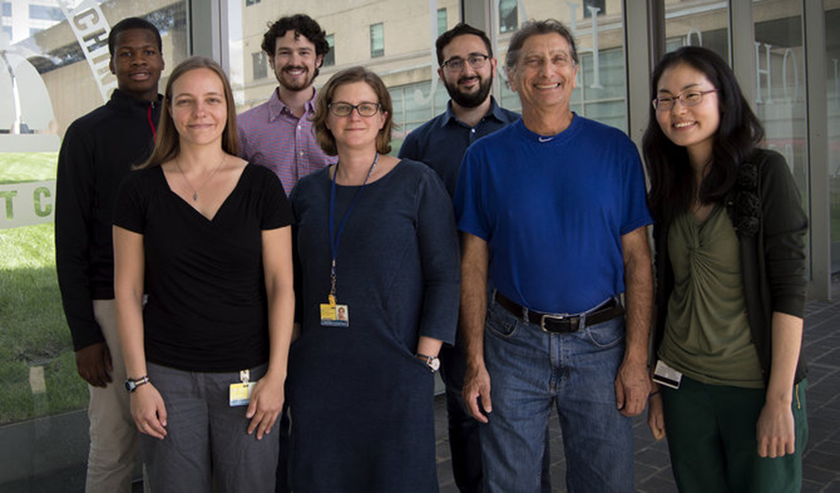Science News Learning, STEM Outreach
‘The article was the catalyst’: Inspired into research by Science News

Before taking an introduction to research course in high school, Sumaita Ahmed had never read a scientific article. But she knew she liked science.
Now, Sumaita is at the forefront, using new research techniques, like CRISPR. In the Yumi Kim Lab at Johns Hopkins University, she’s researching chromosome mechanisms in C. elegans, a type of nematode roundworm.
Science News made literature easy to understand.
Sumaita, a high school junior at the Baltimore Polytechnic Institute, studies the molecular mechanisms that influence chromosome distribution during meiosis. When chromosome distribution goes wrong, that can lead to problems like an abnormal number of chromosomes, causing various disorders like Down’s syndrome or even death.
“We know more about mitosis than we do meiosis,” Sumaita explained. “We know about the effects, but we don’t know a lot about how it goes wrong. I really wanted to learn more.”
In her high school science class, Sumaita is learning about genetics and epigenetics, the study of changes in organisms caused by the modification of gene expression rather than the alteration of the genetic code itself. “After reading an article from Science News, I started researching epigenetics and it became my focus,” she said. “The article was the catalyst.”
Sumaita’s high school is participating in the Science News in High Schools program, which provides students with digital access to the full Science News archives dating back to 1924 in addition to 10 print copies and an online Educator’s Guide. The program reaches 10,000 teachers and 4.1 million high school students around the country and worldwide.

Sumaita said reading articles in Science News gave her insight into the field of genetics, a subject she didn’t know much about. She became so inspired she found opportunities to conduct her own research in a university lab.
Sumaita wants to continue her independent project on factors that may inhibit the localization of the cohesion complex during meiosis. The cohesion complex is a multi-protein complex that holds chromosomes together during meiosis. “If the separation goes wrong, or the proteins can’t hold the chromosomes together properly, then the chromosomes missegregate,” she explained.
When she goes to college, Sumaita plans to major in a STEM field. “I’ve always had my heart set on medicine, but I’m not sure if I want to do medical research or interact with patients. My current research projects are giving me insight into that,” she said of her research and Science News in High Schools experience.Support other young scientists by becoming a member of the Society.

Omobolade Odedoyin, another junior at Baltimore Polytechnic Institute, is interested in the link between hearing loss and Alzheimer’s disease.
Omobolade became interested in Alzheimer’s after hearing on the radio about its increasing incidence when he was in middle school. In his high school science class, he continued to learn about Alzheimer’s from articles in Science News.
“I liked that Science News was really direct and relatable,” Omobolade said. “Its directness and interesting topics were really appealing.”
Seeing Omobolade ‘s curiosity, his teacher Ms. Fridman told him about research opportunities related to the disease that he could get involved in.
Omobolade started his venture in research this past summer. He joined Amanda Lauer’s lab at Johns Hopkins, where he focused on the gene TREM2, a risk factor that triples a person’s chances of developing Alzheimer’s disease. “Sixty million people have Alzheimer’s disease, and 3.6 percent of them have the TREM2 gene,” Omobolade said. TREM2 relates to inflammation in the hair cells and hearing loss is shown to have a correlation with Alzheimer’s on insurance claims. In fact, there’s a 60 percent correlation between hearing loss and Alzheimer’s in groups ages 80-92.
“I wanted to see how having Alzheimer’s in comparison to a regular age-related hearing loss compares,” he explained. “So I’m measuring the cognitive impairment of the different groups and the level of hearing loss that occurs. While there is no definitive evidence proving such a link between these two disorders, there is some evidence suggesting an association between them. This is what I am studying.”
Measuring cognitive impairment is essentially measuring the effect of Alzheimer’s on the brain. A subject with hearing loss and Alzheimer’s should have more cognitive impairment because of the combination of detrimental effects of both conditions, Omobolade said.
Omobolade is using transgenic mouse models to determine how long periods of sound can impact hearing. He has had the opportunity to use various research techniques such as imaging brain structures and florescent antibody straining to label and visualize hair cells on the cochlea, a structure in the inner ear.
Omobolade plans to apply to the Regeneron Science Talent Search next year, and go into pre-med and medical school. “I’ve always seen Johns Hopkins as my dream school,” he said. Now, with research under his belt, Omobolade has a better understanding of what life at Hopkins or in medical school entails.


